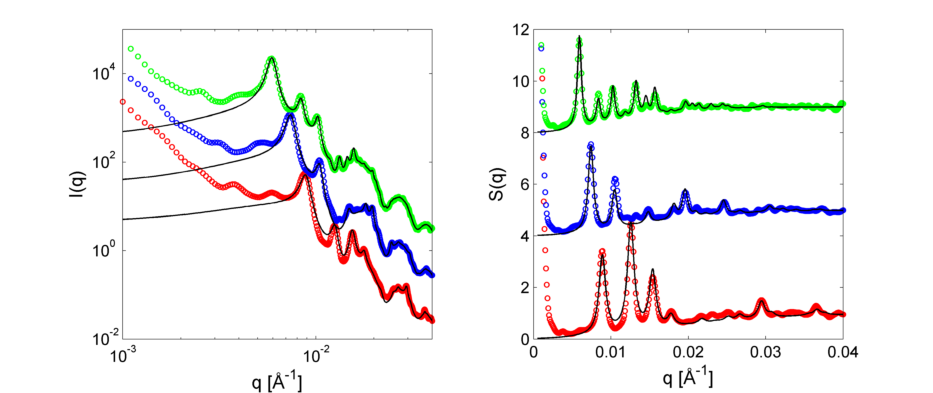|
This software tool is for simulating small and wide-angle scattering data, in one dimension or two, including glancing-incidence (GISAXS and GIWAXS) geometries. Scattering from a single particle or assemblies of particles can be simulated. In order to compute scattering of various crystalline assemblies made of any polyhedral particles, the powder diffraction theory is further extended for taking into account the diffuse scattering in the small angle region, which is called the pseudo lattice factor approach.
The form factor scattering is computed with a method that takes advantage of the symmetry of the particles. Atomic coordinates can be loaded to compute wide-angle scattering. Any lattice type can be modeled including 1-D, 2-D and 3-D lattices with any of 230 space groups. Particles can be inorganic polyhedra, organic molecules, proteins or virus capsids. |
| Distribution & Impact |
|
This software is used extensively for data analysis for experiments at 12-ID-B. This is project still under development. There are no plans for distribution other than to collaborators. |
| Funding Source |
|
This project has been produced using operational funding from the APS, contract DE-AC02-06CH11357. |
| Please cite |
|
A publication describing the theory development is currently in preparation. |
| Related Publications |
|
Jones, M. R., Macfarlane, R. J., Lee, B., Zhang, J., Young, K. L., Senesi, A. J. & Mirkin, C. A. (2010). Nat Mater 9, 913-917. Macfarlane, R. J., Jones, M. R., Lee, B., Auyeung, E. & Mirkin, C. A. (2013). Science 341, 1222-1225. Macfarlane, R. J., Lee, B., Jones, M. R., Harris, N., Schatz, G. C. & Mirkin, C. A. (2011). Science 334, 204-208. Young, K. L., Personick, M. L., Engel, M., Damasceno, P. F., Barnaby, S. N., Bleher, R., Li, T., Glotzer, S. C., Lee, B. & Mirkin, C. A. (2013). Angewandte Chemie International Edition 52, 13980-13984. |
| Future Work |
|
While GISAXS and GIWAXS are computed using the Born approximation, eventually DWBA formalism may be included. |

